Monacor DMG-600 Handleiding
Bekijk gratis de handleiding van Monacor DMG-600 (2 pagina’s), behorend tot de categorie Microfoon. Deze gids werd als nuttig beoordeeld door 50 mensen en kreeg gemiddeld 5.0 sterren uit 25.5 reviews. Heb je een vraag over Monacor DMG-600 of wil je andere gebruikers van dit product iets vragen? Stel een vraag
Pagina 1/2

ELECTRONICS FOR SPECIALISTS ELECTRONICS FOR SPECIALISTS ELECTRONICS FOR SPECIALISTS ELECTRONICS FOR SPECIALISTS ELECTRONICS FOR SPECIALISTS ELECTRONICS
DMG-600
Bestell-Nr. • Order No. 0231560
MONACOR INTERNATIONAL GmbH & Co. KG • Zum Falsch 36 • 28307 Bremen • Germany
Copyright© by MONACOR INTERNATIONAL. All rights reserved. A-1724.99.02.12.2019
12
3
Dynamic
Gooseneck Microphone
These instructions are intended for users
without any specific technical knowledge.
Please read these instructions carefully
prior to operation and keep them for later
reference.
1 Applications
This dynamic cardioid gooseneck microphone
is designed for sound conversion of speech. It
is specially intended for units equipped with
an XLR microphone connection on the front
panel.
2 Important Notes
The microphone corresponds to all relevant
directives of the EU and is therefore marked
with .
•
The microphone is suitable for indoor use
only. Protect it against dripping water, splash
water and high humidity. The admissible am-
bient temperature range is 0 – 40 °C.
•
For cleaning only use a dry, soft cloth; never
use chemicals or water.
•
No guarantee claims for the microphone and
no liability for any resulting personal dam-
age or material damage will be accepted if
the microphone is used for other purposes
than originally intended, if it is not correctly
connected or if it is not repaired in an expert
way.
If the microphone is to be put out of
op eration definitively, take it to a local
re cycling plant for a disposal which is
not harmful to the environment.
3 Setting into Operation
Connect the microphone to the XLR micro-
phone input of the audio unit (e. g. mixer,
amplifier). Adjust the gooseneck of the micro-
phone as desired.
4 Specifications
Type: . . . . . . . . . . . . . . . .dynamic micro-
phone
Pick-up pattern: . . . . . . .cardioid
Frequency range: . . . . . .200 – 12 000 Hz
Sensitivity: . . . . . . . . . . . .2 mV/ Pa at 1 kHz
Impedance: . . . . . . . . . . .500 Ω
Ambient temperature: . . .0 – 40 °C
Dimensions: . . . . . . . . . .⌀ 21 mm × 565 mm
Weight: . . . . . . . . . . . . .162 g
Connection: . . . . . . . . . .XLR, balanced
Subject to technical change.
Dynamisches
Schwanenhals-Mikrofon
Diese Bedienungsanleitung richtet sich
an Benutzer ohne besondere Fachkennt-
nisse. Bitte lesen Sie die Anleitung vor dem
Betrieb gründlich durch und heben Sie sie
für ein späteres Nachlesen auf.
1 Einsatzmöglichkeiten
Dieses dynamische Schwanenhals-Mikrofon
mit Nierencharakteristik ist für die Schallum-
wandlung von Sprache konzipiert. Es ist spezi-
ell für Geräte vorgesehen, die über einen XLR-
Mikrofonanschluss auf der Frontseite verfügen.
2 Wichtige Hinweise
Das Mikrofon entspricht allen relevanten Richt-
linien der EU und trägt deshalb das -Zeichen.
•
Verwenden Sie das Mikrofon nur im Innen-
bereich und schützen Sie es vor Tropf- und
Spritzwasser sowie vor hoher Luftfeuchtig-
keit. Die zulässige Einsatztemperatur beträgt
0 – 40 °C.
•
Verwenden Sie für die Reinigung nur ein tro-
ckenes, weiches Tuch, auf keinen Fall Chemi-
kalien oder Wasser.
•
Wird das Mikrofon zweckentfremdet, falsch
angeschlossen oder nicht fachgerecht repa-
riert, kann keine Haftung für daraus resul-
tierende Sach- oder Personenschäden und
keine Garantie für das Mikrofon übernom-
men werden.
Soll das Mikrofon endgültig aus dem
Betrieb genommen werden, überge-
ben Sie es zur umweltfreundlichen
Entsorgung einem örtlichen Recy-
clingbetrieb.
3 Inbetriebnahme
Das Mikrofon auf den XLR-Mikrofoneingang
des Audiogerätes (z. B. Mischpult, Verstärker)
aufstecken. Den Schwanenhals des Mikrofons
wie gewünscht ausrichten.
4 Technische Daten
Typ: . . . . . . . . . . . . . . . . .dynamisches Mikro-
fon
Richtcharakteristik: Niere . . . . .
Frequenzbereich: . . . . . . .200 – 12 000 Hz
Empfindlichkeit: . . . . . . .2 mV/ Pa bei 1 kHz
Impedanz: . . . . . . . . . . . .500 Ω
Einsatztemperatur: . . . . .0 – 40 °C
Abmessungen: . . . . . . . .⌀ 21 mm × 565 mm
Gewicht: . . . . . . . . . . . . .162 g
Anschluss: . . . . . . . . . . . .XLR, symmetrisch
Änderungen vorbehalten.
DeutschEnglish
Beschaltung • Circuit diagram
Pin Deutsch English
1 Masse ground
2 Signal + signal +
3 Signal − signal −

ELECTRONICS FOR SPECIALISTS ELECTRONICS FOR SPECIALISTS ELECTRONICS FOR SPECIALISTS ELECTRONICS FOR SPECIALISTS ELECTRONICS FOR SPECIALISTS ELECTRONICS
MONACOR INTERNATIONAL GmbH & Co. KG • Zum Falsch 36 • 28307 Bremen • Germany
Copyright© by MONACOR INTERNATIONAL. All rights reserved. A-1724.99.02.12.2019
12
3
Microfono dinamico
a collo di cigno
Queste istruzioni sono rivolte all‘utente
senza conoscenze tecniche specifiche. Vi
preghiamo di leggerle attentamente prima
della messa in funzione e di conservarle
per un uso futuro.
1 Possibilità d’impiego
Questo microfono dinamico a cardioide a collo
di cigno è stato realizzato per la riproduzione
della lingua parlata. È previsto specialmente
per apparecchi con collegamento micro XLR
sul lato frontale.
2 Avvertenze importanti
Il microfono è conforme a tutte le direttive rile-
vanti dell’UE e pertanto porta la sigla .
•
Usare il microfono solo all’interno di locali
e proteggerlo dall’acqua gocciolante e dagli
spruzzi d’acqua nonché da alta umidità
dell’aria. La temperatura d’esercizio am-
messa è 0 – 40 °C.
•
Per la pulizia usare solo un panno morbido,
asciutto; non impiegare in nessun caso pro-
dotti chimici o acqua.
•
Nel caso d’uso improprio, di collegamenti
sbagliati o di riparazione non a regola d’arte
del microfono, non si assume nessuna re-
sponsabilità per eventuali danni consequen-
ziali a persone o a cose e non si assume nes-
suna garanzia per il microfono.
Se si desidera eliminare il microfono
definitivamente, consegnarlo per lo
smaltimento ad un’istituzione locale
per il riciclaggio.
3 Messa in funzione
Inserire il microfono nell’ingresso micro XLR
dell’apparecchio audio (p. es. mixer, amplifica-
tore). Orientare il collo di cigno secondo con-
venienza.
4 Dati tecnici
Tipo: . . . . . . . . . . . . . . . .microfono dinamico
Caratteristica: . . . . . . . . .a cardioide
Banda passante: . . . . . . .200 – 12 000 Hz
Sensibilità: . . . . . . . . . . .2 mV/ Pa a 1 kHz
Impedenza: . . . . . . . . . . .500 Ω
Temperatura
d’impiego: . . . . . . . . . . .0 – 40 °C
Dimensioni: . . . . . . . . . . .⌀ 21 mm × 565 mm
Peso: . . . . . . . . . . . . . . . .162 g
Collegamento: . . . . . . . .XLR, simmetrico
Con riserva di modifiche tecniche.
DMG-600
Réf. num. • Codice 0231560
Microphone dynamique
col de cygne
Cette notice s‘adresse aux utilisateurs sans
connaissances techniques particulières.
Veuillez lire la présente notice avant le
fonctionnement et conservez-la pour pou-
voir vous y reporter ultérieurement.
1 Possibilités d’utilisation
Le microphone dynamique col de cygne, car-
dioïde, est conçu pour la conversion du son
de parole. Il est spécialement adapté pour les
appareils disposant d’une prise micro XLR sur
la face avant.
2 Conseils importants
Le microphone répond à toutes les directives
nécessaires de l’Union Européenne et porte
donc le symbole .
•
Le microphone n’est conçu que pour une
utilisation en intérieur. Protégez-le de tout
type de projections d’eau, des éclaboussures
et d’une humidité de l’air élevée. La plage
de température de fonctionnement autori-
sée est de 0 – 40 °C.
•
Pour le nettoyer, utilisez un chiffon sec et
doux, en aucun cas de produits chimiques
et d’eau.
•
Nous déclinons toute responsabilité en cas
de dommages matériels ou corporels résul-
tants si le microphone est utilisé dans un but
autre que celui pour lequel il a été conçu, s’il
n’est pas correctement branché ou s’il n’est
pas réparé par une personne habilitée ; en
outre, la garantie deviendrait caduque.
Lorsque le microphone est définitive-
ment retiré du service, vous devez le
déposer dans une usine de recyclage
adaptée pour contribuer à son élimi-
nation non polluante.
CARTONS ET EMBALLAGE
PAPIER À TRIER
3 Fonctionnement
Branchez le microphone à l’entrée micro XLR
de l’appareil audio (par exemple table de
mixage, amplificateur). Dirigez le col de cygne
comme souhaité.
4 Caractéristiques techniques
Type : . . . . . . . . . . . . . . .microphone dyna-
mique
Caractéristique : . . . . . . .cardioïde
Bande passante : . . . . . . .200 – 12 000 Hz
Sensibilité : . . . . . . . . . . .2 mV/ Pa à 1 kHz
Impédance : . . . . . . . . . .500 Ω
Température
d’utilisation : . . . . . . . . . .0 – 40 °C
Dimensions : . . . . . . . . . .⌀ 21 mm × 565 mm
Poids: . . . . . . . . . . . . . . .162 g
Branchement : . . . . . . . .XLR, symétrique
Tout droit de modification réservé.
FrançaisItaliano
Schéma électrique • Schema elettrico
Pin Français Italiano
1 masse massa
2 signal + segnale +
3 signal − segnale −
Product specificaties
| Merk: | Monacor |
| Categorie: | Microfoon |
| Model: | DMG-600 |
| Kleur van het product: | Zwart |
| Diepte: | 565 mm |
| Soort: | Microfoon voor interviews |
| Connectiviteitstechnologie: | Bedraad |
| Aansluiting: | mini XLR (3-pin) |
| Microphone direction type: | Cardioïde |
| Spreekspoel types: | Dynamisch |
| Frequentie microfoon: | 200 - 12000 Hz |
| Microphone input impedance: | 500 Ohm |
| Gewicht microfoon: | 162 g |
Heb je hulp nodig?
Als je hulp nodig hebt met Monacor DMG-600 stel dan hieronder een vraag en andere gebruikers zullen je antwoorden
Handleiding Microfoon Monacor

22 Juni 2023

19 Juni 2023

19 Juni 2023

19 Juni 2023

18 Juni 2023

16 Juni 2023

15 Juni 2023

11 Juni 2023

11 Juni 2023

11 Juni 2023
Handleiding Microfoon
- Connect IT
- Skytec
- SmallRig
- Hohem
- Countryman
- Reloop
- Cyber Acoustics
- QFX
- Nacon
- Universal Audio
- Livoo
- MELONARE
- LOKUKA
- IC Intracom
- IDance
Nieuwste handleidingen voor Microfoon
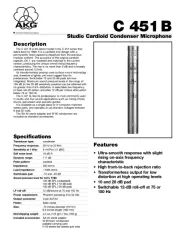
2 Augustus 2025
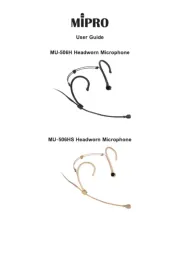
29 Juli 2025
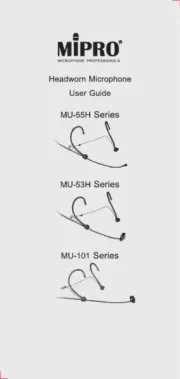
29 Juli 2025
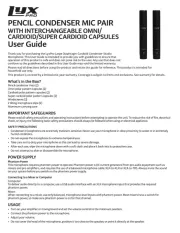
29 Juli 2025

29 Juli 2025
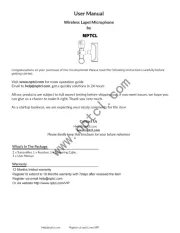
28 Juli 2025
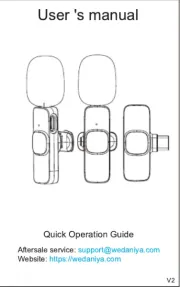
28 Juli 2025
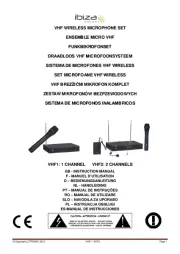
28 Juli 2025
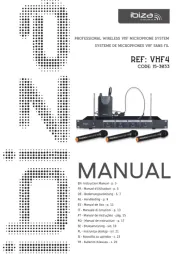
28 Juli 2025
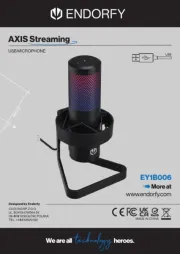
23 Juli 2025